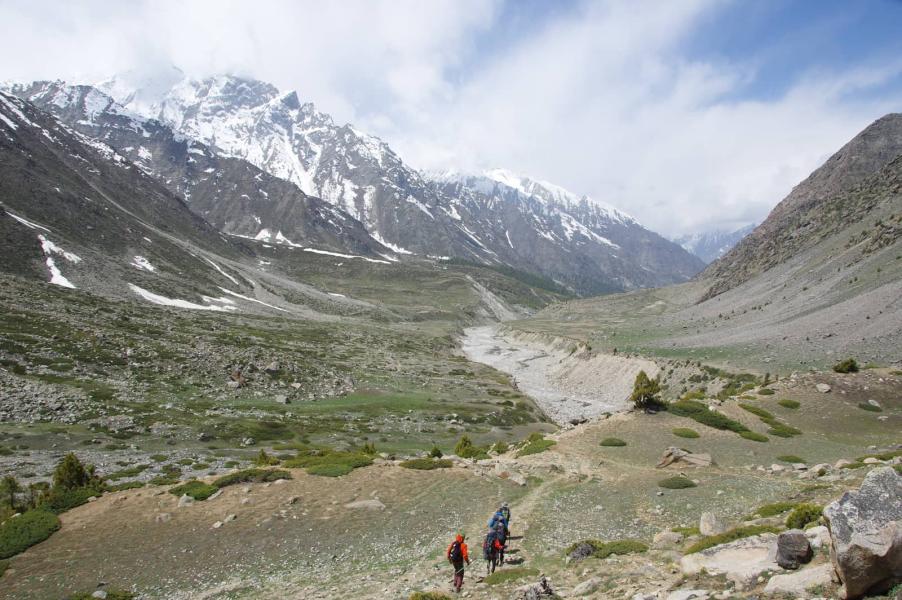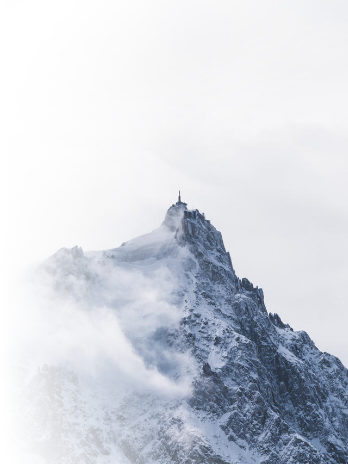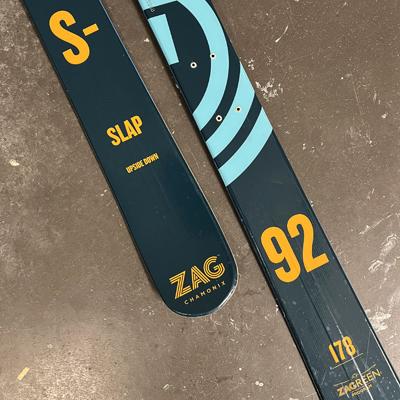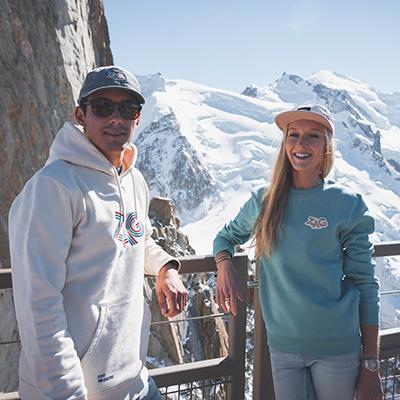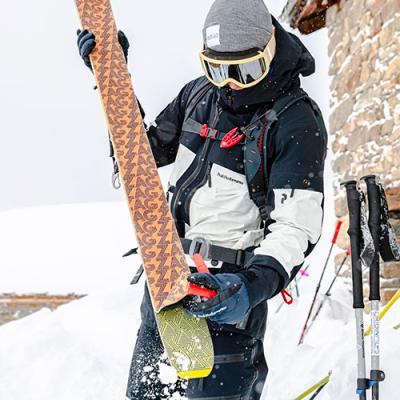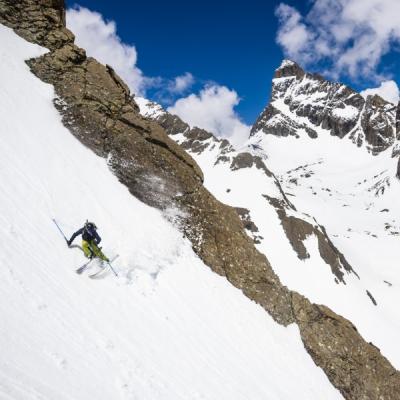India: ski touring mission on Tharang
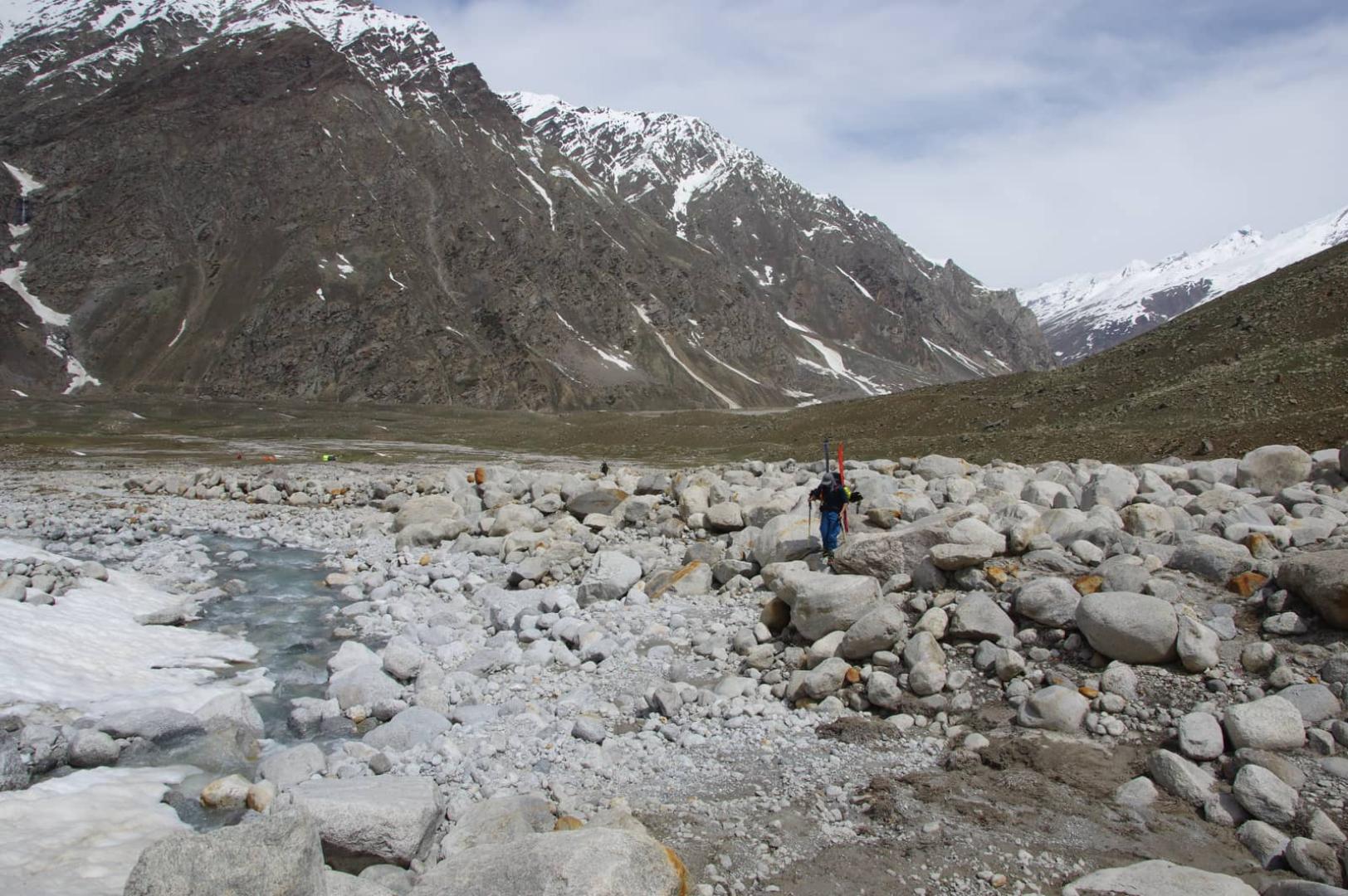
Last May, Maxime Buffet and his friends setting up a crazy project: skiing in the Miyar valley (East North India) the giants Tharang peaks. If the begining of the trip seems a bit chaotic, no doubt that the last 10 days of skiing the indian snow will be keep as a lifetime memory.
_Text Max Buffet
_Pictures David Gouel
A difficult Arrival in India: Rothang Pass
1:30 AM, Delhi Airport
The team has arrived, but to our dismay, a bag is missing. Of course, it’s one of our most important equipment bags, and the airport staff notifies us that it won’t arrive for at least 24 hours. As we exit the airport without it, we receive a warm greeting from the humid, polluted air.
We arrive at our hotel and dive into our beds, embracing the glacial air conditioning. The next day, part of the team leaves on a 5:00 PM bus to the small city of Manali while Régis and Tristan stay in Delhi to pick up the missing bag. The rest of us are excited to reach Manali, a small city at the gate of the Himalayan Range.
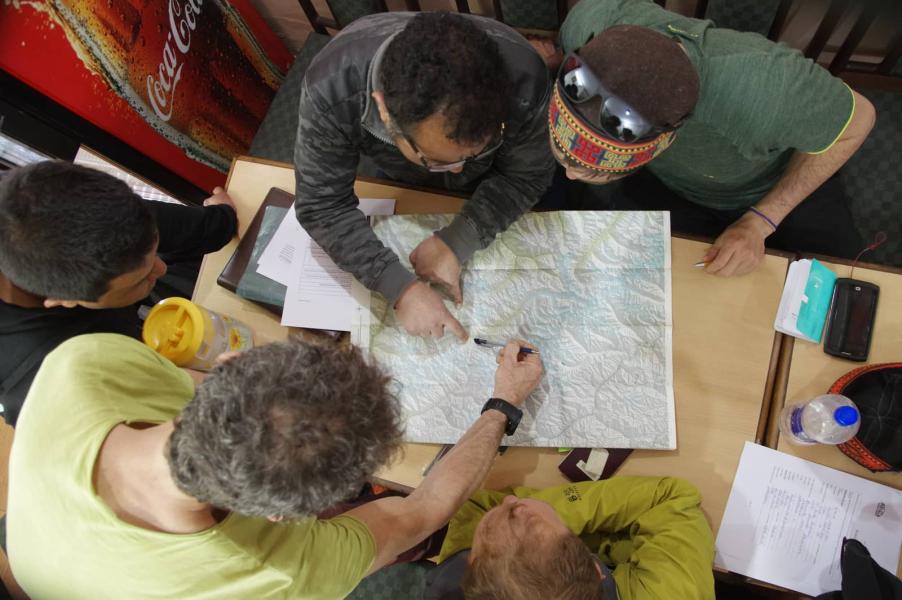
For the moment, the Rohtang Pass (3,950m), which is our entrance to the mountains, is not yet open. Word has it that there are still seven kilometers of road that need to be cleared of snow. We imagine all of the solutions that could help us cross the passage (the only way we can reach the departure point of our expedition) despite the closure. One idea is to take a tunnel under the passage, but its construction has not yet been finished. Apparently, the tunnel will open temporarily in order to allow those who live up north to come vote in Manali, but even if we try to pass, we likely wouldn’t make it since the authorities aren’t allowing tourists to use the tunnel.
Another solution would be to climb to the summit in a 4x4, and then ski back and forth to take our 500 kilograms of equipment into the valley. 30 kilograms per person would mean four round trips on skis. That would be an intense warm up…
Prem, our local contact, recommends that we wait. Meanwhile, we wonder if we need to start thinking about changing our destination
As soon as we begin to really consider this idea, we learn that in two days we will be able to pass. Woo! The next day, Prem calls me to say that we will leave at 2:00 PM… even better!
The quantity of snow increases as we climb, the walls surrounding the road becoming increasingly tall and steep. At a certain point, the walls become so tight that our rearview mirrors touch the snow on both sides. In some places, the snow walls are more than 10 meters high. Incredible! After descending for several kilometers, we notice some vehicles that are going the opposite direction in front of us. The passage is only meant to be open for our direction of traffic… how are we meant to pass other cars with only 10 centimeters of space on each side of the vehicle? This is when Indian magic comes into play: after driving one kilometer in reverse, our driver parks in a hole to let the other vehicles pass. We would soon learn that authorities closed the road for an additional 10 days shortly after our passage. Karma is working in our favor so far.
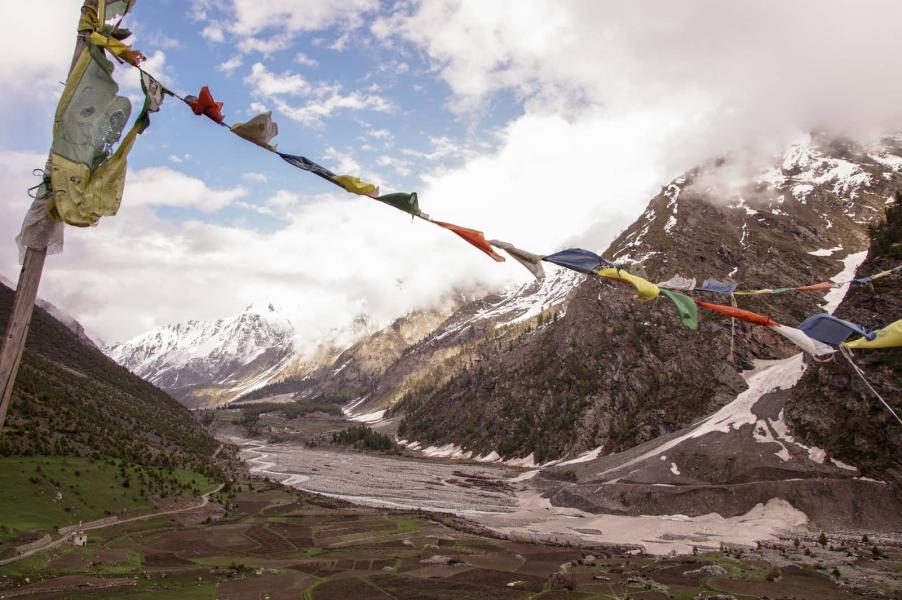
The day before departure: Preparation
The next day, we arrive around noon in the village of Urgos at the gate of the Miyar Valley, and we are already feeling the first effects of the altitude. We go to visit the neighboring village where an annual festival is taking place. Accompanied by flutes and percussion, men of all ages are shooting bows and arrows. We are in the middle of their abandoned fields, bordered by the mountains. We can barely see the summits. Naturally, alcohol is involved in this ceremony, with a choice between white alcohol made from rice or a mix between cider and kombucha. The latter option seems to have the sole purpose of making your head spin. Nevertheless, the locals warmly welcome us, keeping our cups full to the brim. More than one host even invites us to dine with them in their homes!
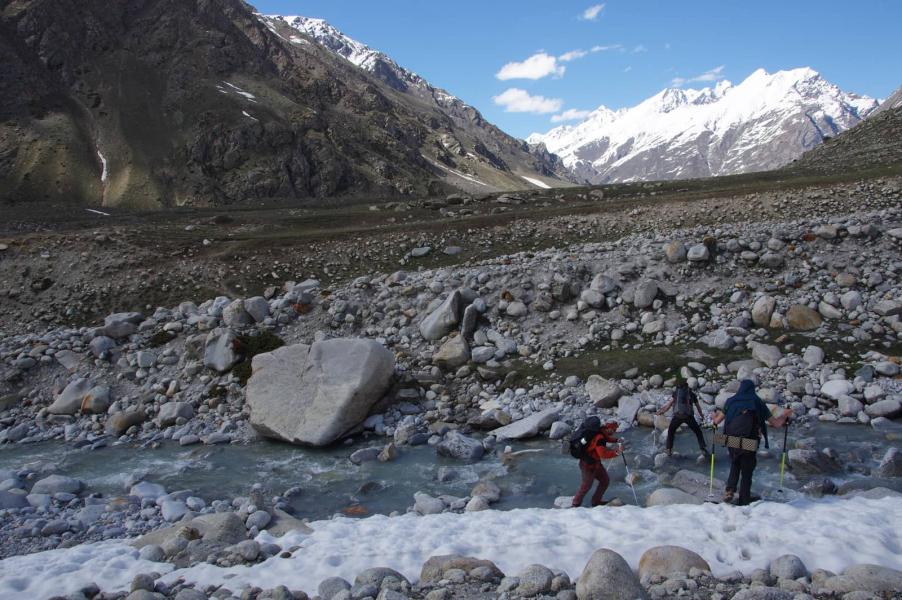
In the evening, we learn that there are only five mules available to use for the transport of our equipment instead of the ten we had planned for. Our departure is therefore delayed by one day. We are not fond of this idea, and we try to find a solution to be able to leave for basecamp by tomorrow morning so we can continue our progressive altitude acclimatization.
In the morning, the bags are ready. After seven days of travel, it’s finally time for action! It’s good for us to get the blood flowing in our legs and to discover the incredible landscapes that surround us. In terms of mountain size, the scale was double, even triple what we were used to seeing in Europe. We passed the last village, and we were finally alone among the cows and the yaks. After this day of walking, we set up at the 3,800-meter basecamp.
I’m really excited for tomorrow to the point where I struggle to sleep. In the morning, because of our late start, we are unable to climb very high. It is already too hot by 11:00 AM, and seeing the overhanging slope to 4,100 meters is not very inspiring. So, we ski down into the valley and we enjoy our first turns on the Indian snow.
In the afternoon, we divide up the supplies for the next day’s journey: dried fruits, gas, couscous, cheese, energy bars… the rations were calculated according to the daily recommended energetic requirement estimated for high mountain survival. We prepare the rest of our material: gather crampons, perform harness checks, and fill or bags which were of course heavier than we had imagined!
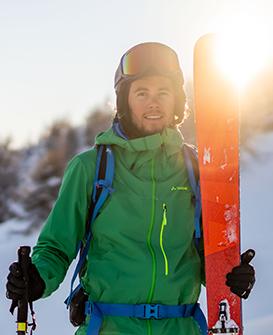
Max Buffet
Native from Serre-Chevalier, Max is ski instructor and competitor on the Freeride World Qualifiers. Mountain lover, he spends most of his time skiing, biking, paragliding or climbing.
The beginig of a long climb
The long and laborious “Mule Phase” has begun, and we understand a bit more what the animals have endured over the past day transporting our materials. We leave on May 23 at 6:00 AM to find the spot for our first camp at 4,300-meters in altitude, just on top of a small sloping ledge that is relatively sheltered from the eventual snow slides. We slow down for safety reasons, since Régis advises us that even if the altitude is not extreme, we must know how to save energy for the long journey. After a quick discussion to determine the camp’s exact location, we put down our materials and go back down to 4,100 meters to pick up what we’d left the day before.
It’s our first time preparing our high altitude camp; we respect everyone’s fatigue and the most tired relax while the others construct platforms for our tents. We split the tasks: some relax and melt the snow to provide the 15 liters of water that we drink daily, others level the terrain and put up the tents. We already can feel the effects of altitude. If you are shoveling with your head down, for example, the moment you look up the world seems to be spinning. Sometimes we work sitting down, taking our time.
By noon, we can only hear the distant sound of falling stones. It feels like time is moving in slow motion… are we in a time warp?
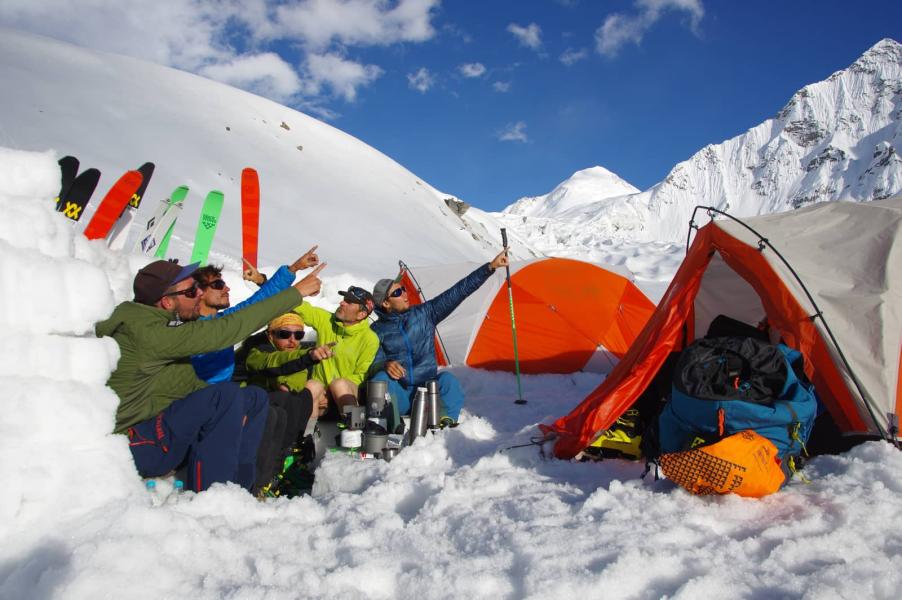
In any case, we’ve finally reached the moment we’ve been preparing for for months. We’ve spent hours and hours exhausting our retinas staring at computer generated 3D maps trying to understand this unknown terrain. Given the time we spent preparing for this adventure, it’s a true privilege to now find ourselves in the middle of the action.
We dedicate the afternoon to resting; we already feel the accumulated fatigue from our many days of travel. It’s extremely hot, and little by little the clouds are arriving to bring the rain. However, we notice with surprise that snowflakes begin to cover our mattresses. This was not the end of our surprises… at dinnertime, the first taste of our pompously named freeze-dried foods (“Hungarian Sautéed Veal,” “Beef of the Hunter,” etc.) shocks us. These freeze dried flavors will soon become routine for each night’s meal.
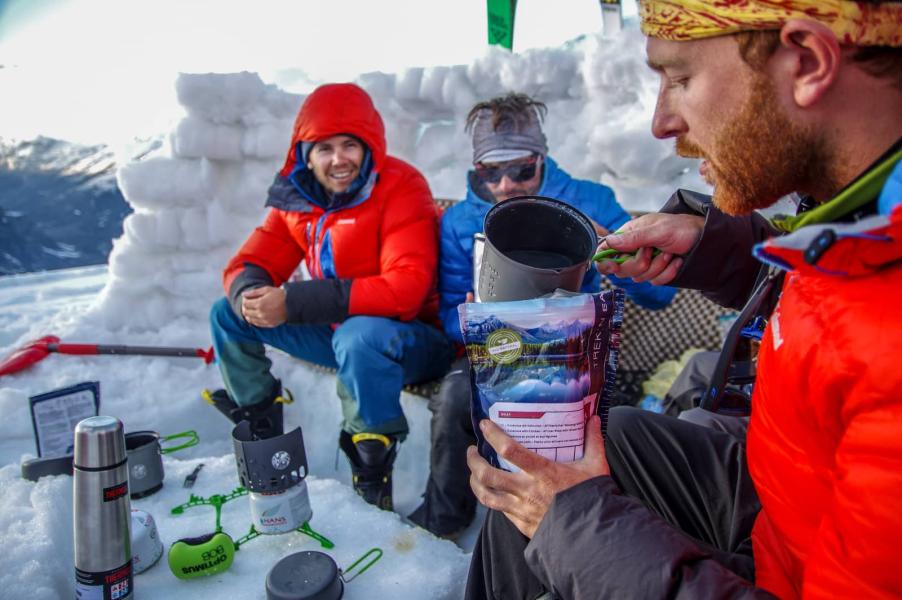
We leave to head to the second 4,800-meter camp. We will have to do two round trips today to be able to bring all of the equipment. Skiing down with an empty bag is amazing— it’s the ideal slope to take big turns in the open valley. We look out at the magnificent glacier which curves like a tongue from the Tharang Summits. The shapes in the ice are incredible. After this fleeting moment of enjoyment, we undergo a hot and difficult climb as we head back up with the equipment. I try to match the pace of Étienne (the strongest of the group), and quickly find myself huffing and puffing for oxygen. It’s difficult, but I manage to continue to advance without stopping and we make it back to camp. I’m done for the day.
Tharang: A physical and mental struggle
Fourth day of feeling like a mule. David goes down to rest at the basecamp. He spent his night dealing with sleep apnea, out of breath, unable to sleep. While he rests, the rest of the team leaves approach our goal: the Tharang Ice Shelf located between 5,300 and 5,500 meters above sea level. We reach the height of our excitement with our first direct visuals of Tharang I and II… beautiful! We rope ourselves up as soon as we think we are on the glacier. Shortly after, I feel a deep fatigue and decide not to continue. Between the weight of the bag, the altitude (we have exceeded 5,000 meters) and the heat of the late morning, I am exhausted. Tristan joins me to descend and we quickly see Regis and Étienne disappear into the distance like two untiring mules. They have taken on our loads, and despite the extra weight, they seem to accelerate at an incredible speed. The legend even says that we see sparks under their skis...
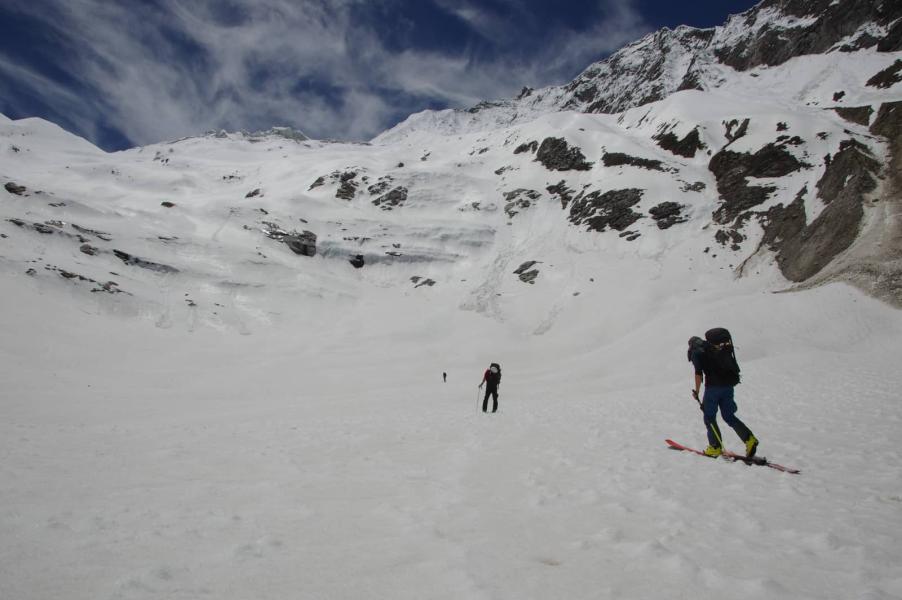
After our return to the 4,800-meter camp, Régis and Étienne quickly join us. I think of David who is currently enjoying the yackuzzi, and who will meet us tomorrow afternoon. The yackuzzi is a local specialty; you just sit and enjoy the massaging icy torrents of the river while the nearby yacks curiously come to observe the rare human being who has entered their river territory.
Sunday the 26th, we leave for Tharang Fang at 5,450 meters, a ridge topped with a massive 20-meter tooth of granite. We pack a light load for the first time since the beginning of the trip: what a joy! After a crampon climb on a 35-degree slope of hardened snow, we reach the ridge. Régis gives us a nice demonstration of a monkey-like crampon climb up the rock. Delicately balanced on a thin piece of granite suspended over the void, he tells us that he prefers this type of climbing to alpinism. Tristan, his son, supports him from below with a red cord. We stay there, observing the tight ropewalker. The joy is intense. We think of David and his yackuzzi when we observe the base camp tents 2,000 meters below us. After a unique ski descent through a west-facing chute, our tired feet reach the steamy water of the yackuzzi by 11:00 AM.
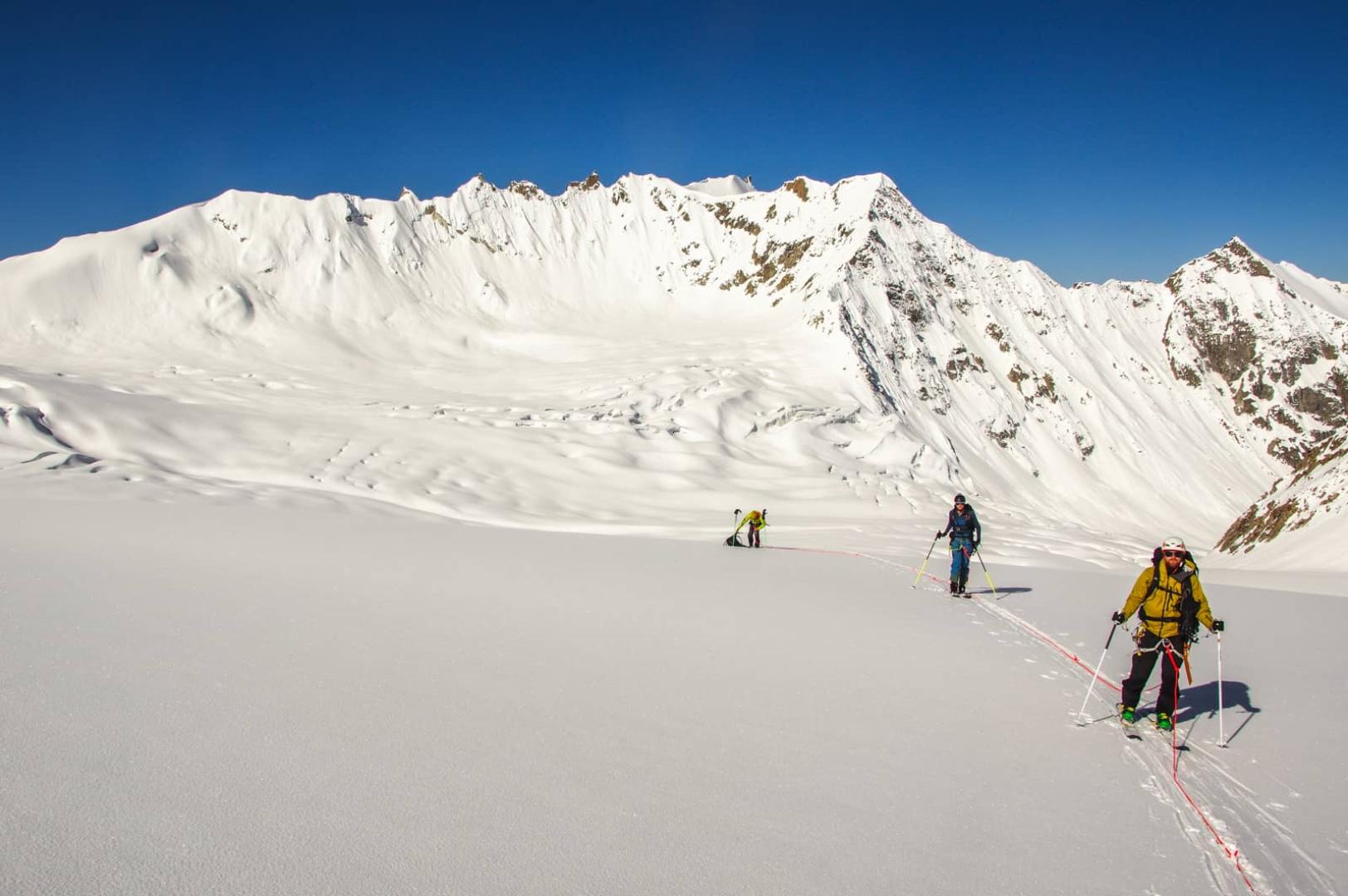
Tuesday, May 28, 6:00 AM, Basecamp: the five mules are ready, even more heavily loaded than before. I don’t know the combined weight of our bags; I only know that mine weighs too much. Everyone is vaguely aware of their overweight bags and can’t help but weigh the bags of others, hoping to find a light one where we can add some extra gas or a last minute ration of couscous. We leave directly for the 4,800-meter camp. This time, under oppressive heat, the climb seems never-ending. The last 200 meters are a true struggle; I’m dying to stop after every step. I think of Régis, Tristan, and Étienne, who have already made it, and I turn back and look at David below me. I tell myself that he’s in even worse shape than I am. This thought helps me hold on… Thanks, David!
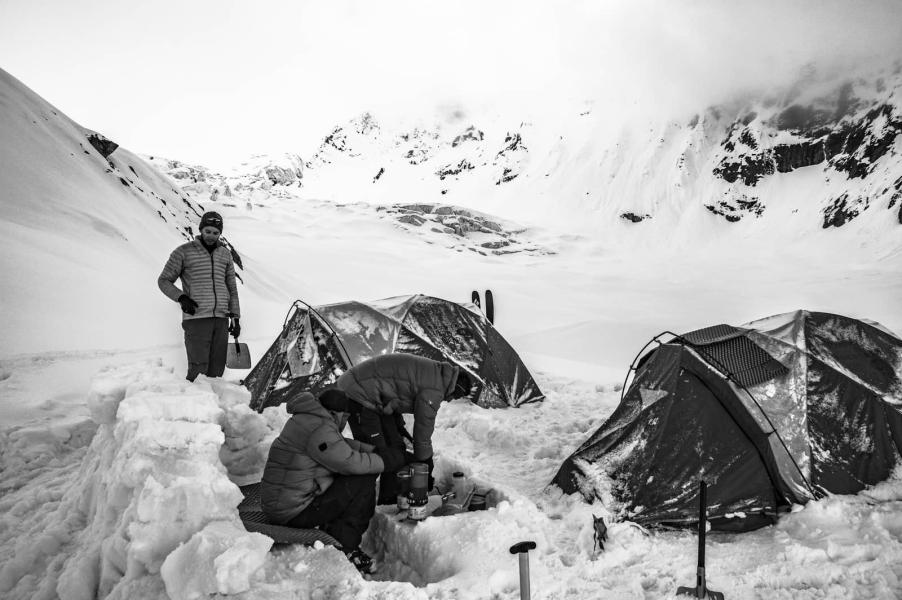
On Wednesday, the 29th, we have finally made it to Camp 3 at 5,370 meters. We are now in the heart of the elements, at the foot of the three Tharang peaks that dominate the area. We set up camp: two tents and a lunch kitchen space with a snow bench facing our snow bar. At noon, in the heat of the day, the sun is generally directly overhead and the northern faces are more in the shade. We eat in our long underwear, protected from sunburn by pants and Goretex vests. Next, the clouds come, bringing small snowstorms and gusts of wind. At the end of the day, the clouds clear and give way to an incredible sunset. As soon as the last ray has disappeared beyond the horizon, the cold arrives and we plunge into our sleeping bags inside the frost-covered tent. We enjoy dinner together in our tent-restaurant where we heat the melted snow. We climb under the covers… its between -10 and -15 degrees Celsius. We start with Tharang III, the most accessible of the peaks at 5,880 meters. During the climb, we hear the characteristic “whoum” of the rupture of a fragile snow layer, signaling a risk of avalanche. We are worried and decide to instead climb along a ridge, sheltered from the possible avalanche. We stop 20 meters below the summit; the last 100-meter ridge is along an immense cliff. We don’t want to risk entering this potentially unstable zone where we’d risk 500-meter fall…. The view from here is obviously indescribable, with snowy summits reaching as far as the eye can see. We also have an excellent view of our next two objectives: Tharang I and Tharang II. The visible face of Tharang II is not very friendly; we can already see the falling snow of spontaneous avalanches. For the moment, we are just observing, deciding on strategies to climb the mountains. We ski down Tharang III and enjoy each turn up to the last small slope leading to Camp 3.
Final energy expenditures before Relaxation
Friday the 29th is dedicated to recovering the material left at Camp 2 and then to relaxation. Étienne and Régis leave to investigate and traverse the glacier to arrive at the foot of Tharang II. When they return, they share their doubts concerning the stability of the snow layer on the northern face. We don’t know if it will be possible to climb Tharang II. Étienne, who still has energy left in his tank, starts to smooth the ridge which runs between the two tents. I immediately understand what he is trying to do. He’s making a jump. I watch him do this from afar; I’m too tired to join him. He does a first test jump, which looks pretty good. After a few more test runs, he stops to visualize the motion of a back flip. 30 seconds later, he executes the trick and lands perfectly. After seeing this, I immediately put on my ski boots; it’s my turn! I’m ultra-excited about the idea of flying upside down at 5,400 meters of altitude. I will remember this experience forever. Thanks for motivating me, Étienne!
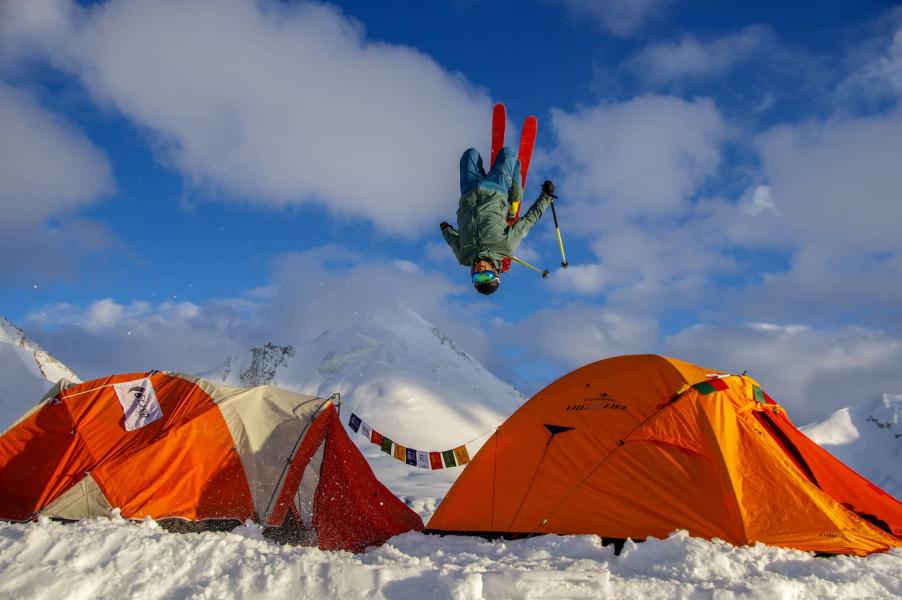
The next day, we decide to attack the jagged peak at 5,900 meters. This granite point is the most extreme part of the main summit on the northwest face of Tharang I, which culminates at 6,066 meters. To reach this point, we must traverse the glacial plateau then climb a steep and short passage before arriving at the foot of a gorgeous 40° straight chute which we climb up with crampons. The ambiance is majestic; we are directly facing the peak of Tharang II at 6,011 meters. The climb is slow but I’m enjoying it a lot. At the summit, it’s our turn to play the tight ropewalker. With Étienne, we climb the last meters of granite that separate us from the small platform. Sitting at the edge of the void, we take the time to enjoy the moment. Régis joins us. From here, we have an excellent view of the chute, which leads directly to Tharang I. It seems really steep, and we are guessing that it ends in ice. This helps us make the decision to not attempt to take the summit by skis, and not on foot either. After all, we came here with the main goal of skiing beautiful slopes; there’s no reason to put ourselves in danger. So, we wait for the snow to soften a bit under the sun. After 45 minutes, nothing has changed and we decide to go down. I’m the lucky leader of the group, and I launch myself into the chute. Even if the snow is hard, the grip is good and my skis work well; I have total confidence in them. This allows me to go fast and make great turns. Three minutes later, I’m at the bottom, and I breathe in all the oxygen I can in order to recover from this high altitude descent. Going down one at a time, everyone enjoys each turn at his own rhythm. We finish up by skiing all together down a magnificent ridge, which brings us all the way to the foot of the basin.
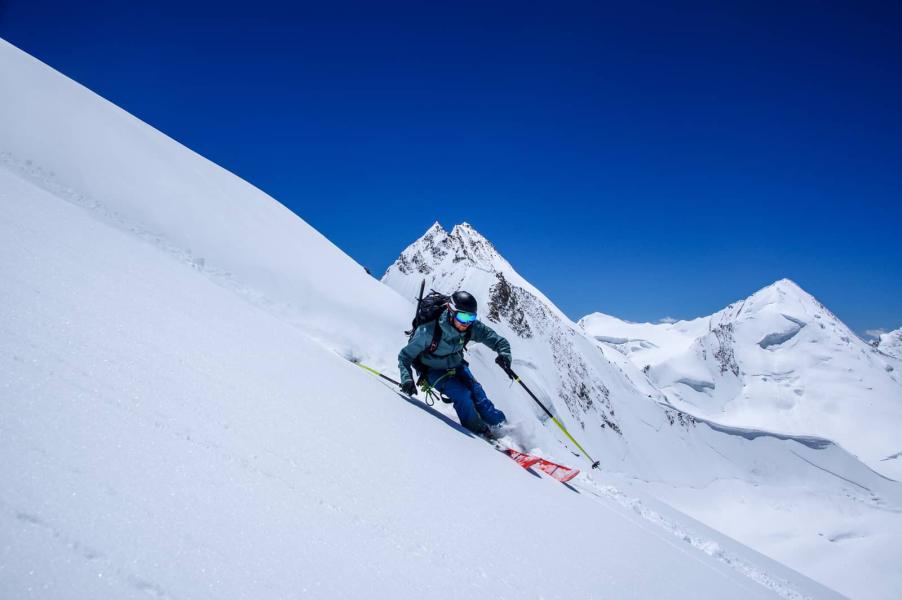
On Sunday, June 2, we separate the team in two. Régis and Étienne explore the last pass between Tharang I and II and find a chute that leads directly to the summit of Tharang II. The climb there will be safe if we leave early in the morning. While Régis and Étienne are exploring, David, Tristan, and I go take pictures of the peaks that we’ve climbed over the last two days. We even find a bit of fresh snow!
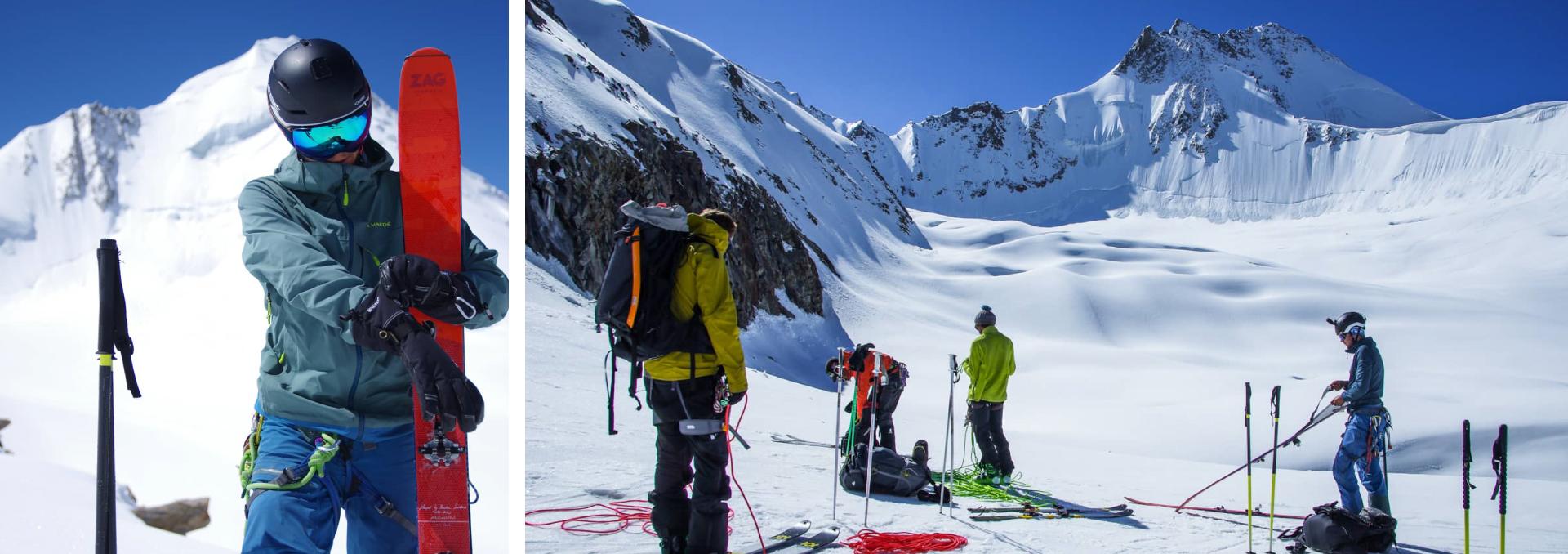
On Monday, June 3, we leave at 4:00 AM. They sky is clear and its -10°C: ideal conditions. We follow the footprints left by Régis and Étienne to reach the Tharang Pass at 5,700 meters, before descending the southern face to reach the foot of the southwestern chute leading to the summit. After all these days spent at high altitude, we can feel the accumulated fatigue, especially Tristan who can barely keep up with our slow rhythm. We support him as much as we can while Régis takes care of safety measures. He installs an anchor 30 meters from the summit cliff to give us supplementary insurance in case of a fall, and also to warn us of possible instability of the snow layer on the northern face. Step by step, we make it to the summit ridge. I’m so tired that I have a hard time even comprehending what we have just achieved. Still, we enjoy this unique moment together, and then we dive back into concentration to prepare our security measures so we can leave the ridge one by one. The descent down the chute is a true pleasure on snow that’s been softened by the sun. Arriving at Camp 3, we are absolutely exhausted. I lie down immediately in the tent, and I don’t move for quite awhile. In the evening, a storm lingers around us; a lightning bolt strikes less than 300 meters away. This is not very reassuring. On Tuesday, June 4, we head down to the basecamp and pick up all the material from Camps 2 and 3. We help each other to load our bags with more than 30 kilograms. My bag’s weight is making my legs hurt. At 11:30 we put our feet in the yackuzzi. I’m the happiest guy in the world.
